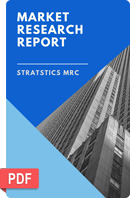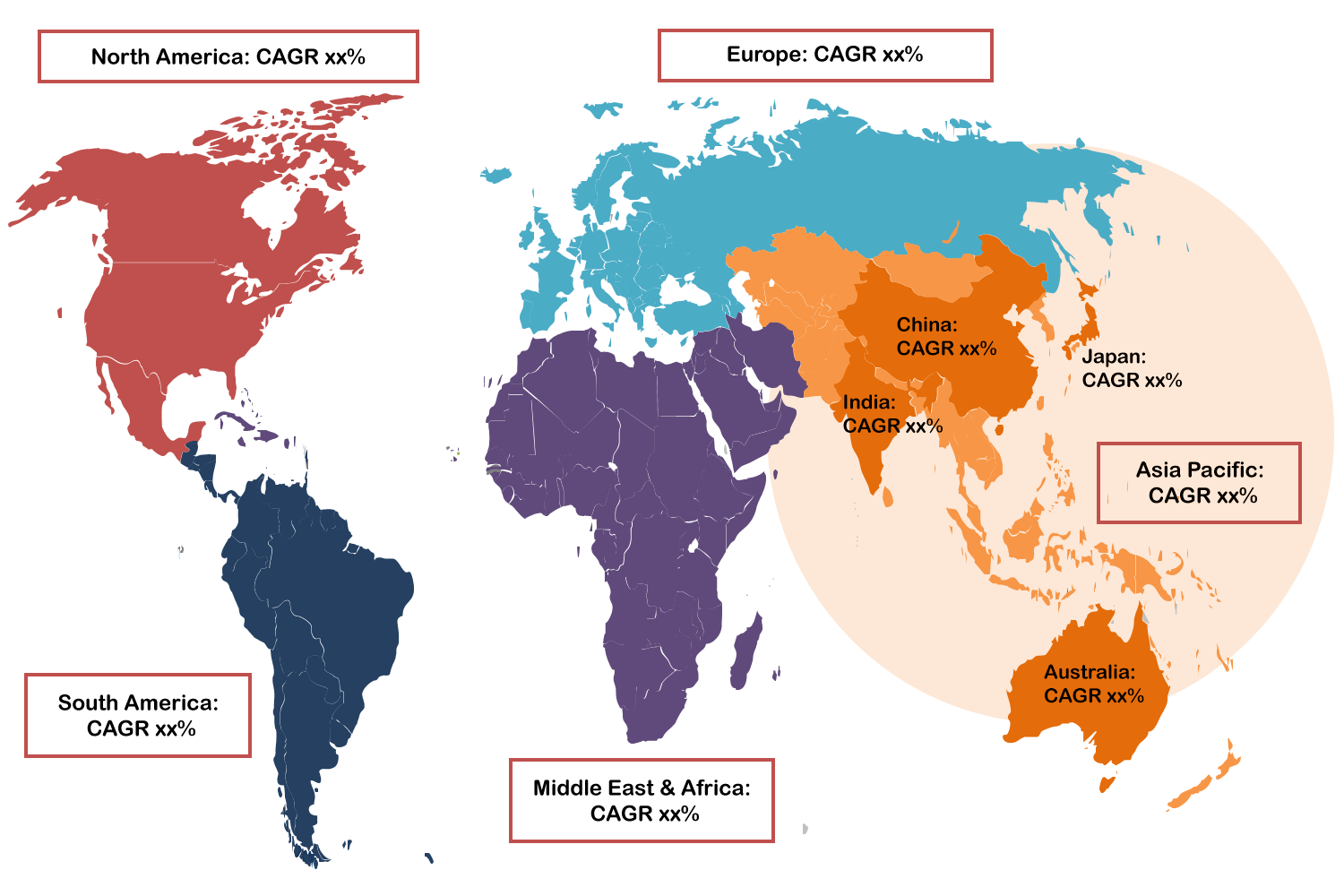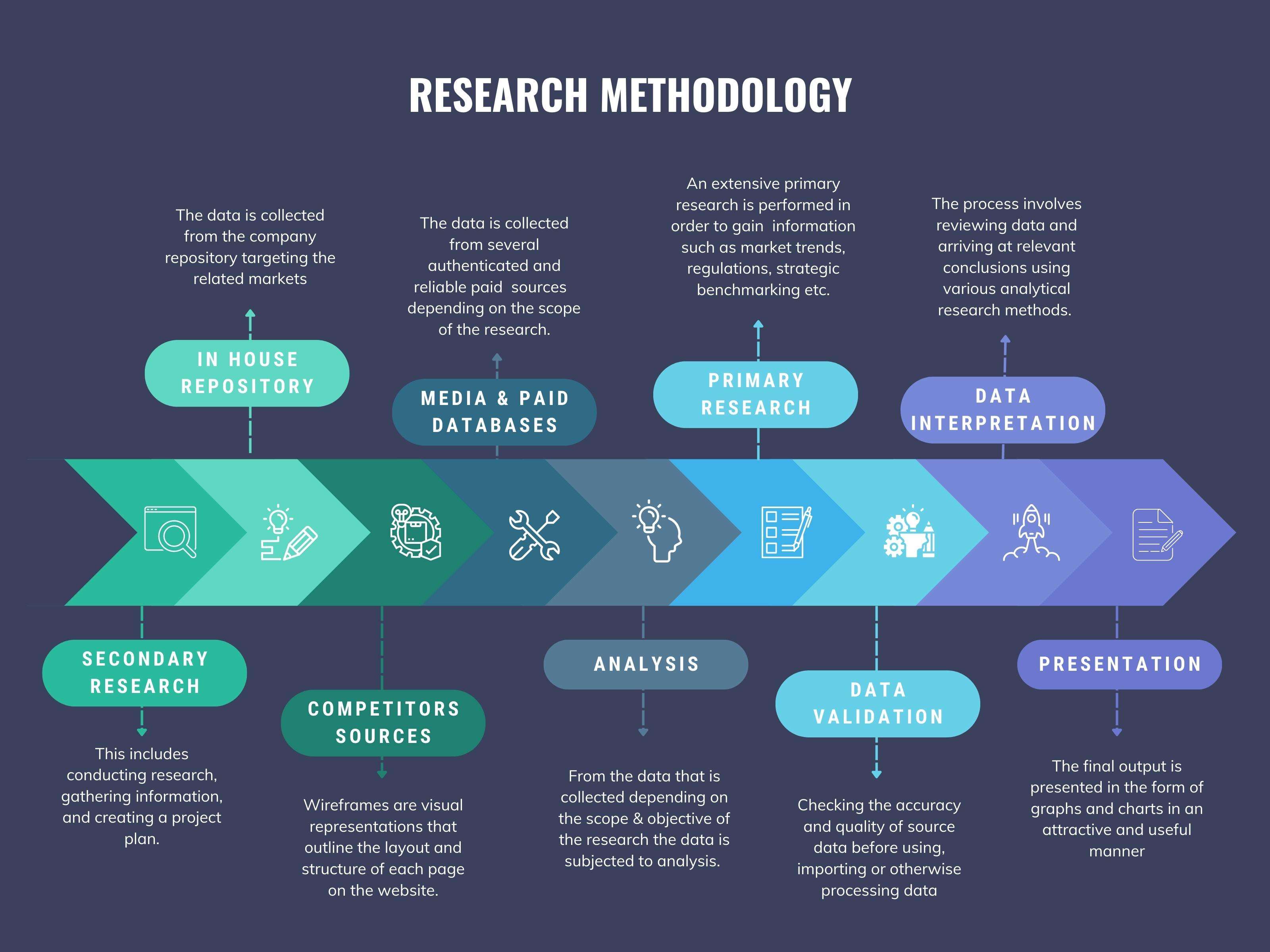
Feed Intermediate Chemicals Market
Feed Intermediate Chemicals Market Forecasts to 2030 - Global Analysis By Type (Organic Intermediates, Inorganic Intermediates, Bio-Based Intermediates and Other Types), Chemical Type, Source, Production Process, Application, End User and By Geography

According to Stratistics MRC, the Global Feed Intermediate Chemicals Market is accounted for $14.7 billion in 2024 and is expected to reach $20.6 billion by 2030 growing at a CAGR of 5.7% during the forecast period. Feed intermediate chemicals are substances used as raw materials in the production of more complex chemicals or products. They serve as key components in manufacturing processes, often undergoing further transformations to create final goods such as plastics, pharmaceuticals, and agrochemicals. These chemicals are typically produced in bulk and are integral to the supply chain in various industries. By acting as precursors, feed intermediate chemicals enable the creation of specialized products, contributing to the efficiency and sustainability of industrial operations.
According to the World Health Organization, Global population is projected to reach 9.8 billion in 2050, and 11.2 billion in 2100. According to Crisil Ratings, revenue of the poultry sector in India increased over 30% to US$ 31.4 Bn in FY 2022-23.
Market Dynamics:
Driver:
Rising global population and protein demand
The rising global population and increasing protein demand are driving growth in the market. As more people require protein-rich diets, particularly from animal sources, there is heightened demand for animal feed additives that optimize growth and health. Feed Intermediate Chemicals, such as amino acids, vitamins, and enzymes, play a critical role in enhancing feed efficiency, ensuring livestock production meets the nutritional needs of a growing global population.
Restraint:
Environmental concerns and sustainability
Environmental concerns and sustainability challenges in the market can lead to negative effects such as increased production costs, regulatory compliance burdens, and limited availability of eco-friendly raw materials. Efforts to reduce environmental impact may require costly innovations or processes, potentially raising prices for feed additives. Additionally, concerns over carbon emissions and waste may slow market growth, as companies face pressure to adopt sustainable practices while balancing profitability and environmental responsibility.
Opportunity:
Focus on animal health and nutrition
The market is pivotal in promoting animal health and nutrition by supplying essential additives like amino acids, vitamins, minerals, and enzymes. These chemicals enhance feed quality, improve digestion, and support overall growth and immunity in livestock. By optimizing nutrient absorption, they prevent deficiencies, reduce disease risks, and boost productivity. This market is key to ensuring sustainable animal farming, improving livestock health, and enhancing the quality of animal-based products.
Threat:
Fluctuating raw material prices
Fluctuating raw material prices in the market can lead to instability in production costs, making it difficult for manufacturers to maintain consistent pricing. These price fluctuations may result in higher production expenses, which could be passed on to consumers, affecting profitability. Additionally, uncertainty in raw material costs can hinder long-term planning, disrupt supply chains, and limit the ability of companies to invest in research and development for new, improved feed additives.
Covid-19 Impact:
The COVID-19 pandemic negatively impacted the market by disrupting supply chains, causing delays in raw material procurement, and increasing production costs. Lockdowns and labor shortages affected manufacturing capacity, while reduced demand in certain sectors, like foodservice, led to lower consumption of animal-based products. The market faced increased uncertainty, but it gradually rebounded as demand for animal feed and health additives rose, driven by the need for sustainable food production.
The polymers and plastics segment is expected to be the largest during the forecast period
The polymers and plastics segment is expected to account for the largest market share during the projection period as they are used in the production of feed additives, encapsulation materials, and packaging. Polymers help in the controlled release of nutrients, improving feed efficiency and animal health. Plastics are essential for packaging feed products, ensuring freshness and preventing contamination. However, concerns over environmental impact and sustainability are prompting the market to explore eco-friendly alternatives for these materials.
The pharmaceuticals segment is expected to have the highest CAGR during the forecast period
The pharmaceuticals segment is expected to have the highest CAGR during the extrapolated period. Antibiotics, probiotics, and other therapeutic additives are incorporated into animal feed to improve growth, immunity, and disease resistance. These pharmaceuticals help optimize livestock productivity and overall well-being. However, growing concerns about antibiotic resistance and regulatory pressures are driving the market towards more sustainable alternatives, such as natural supplements and plant-based additives.
Region with largest share:
North America region is projected to account for the largest market share during the forecast period. Key players focus on developing additives like amino acids, vitamins, and minerals to enhance feed efficiency and animal health. The market is also influenced by stringent regulatory standards for animal nutrition and sustainability. Increasing awareness of sustainable practices and rising demand for animal-based products further fuel market growth in the region.
Region with highest CAGR:
Asia Pacific is expected to register the highest growth rate over the forecast period. Rising awareness about animal health, coupled with consumer demand for safe, quality animal products, is fueling the demand for advanced feed ingredients that improve animal growth, immunity, and overall health. Additionally, Countries like China, India, and Southeast Asia have rapidly expanding aquaculture industries. Feed additives that improve the quality and health of aquatic animals are in high demand.

Key players in the market
Some of the key players in Feed Intermediate Chemicals market include BASF SE, Dow Inc., ExxMobil Chemical Company, SABIC, LyondellBasell Industries, China National Petroleum Corporation (CNPC), Royal Dutch Shell, Mitsubishi Chemical Corporation, Huntsman Corporation, Chevron Phillips Chemical Company, LG Chem, Eastman Chemical Company, AkzoNobel, Arkema, Solvay, Syngenta International AG, Wacker Chemie AG, Clariant, Reliance Industries Limited and Toray Industries, Inc.
Key Developments:
In May 2024, Dow and Freepoint Eco-Systems has announced supply agreement to transform plastic waste into new circular products. The supply agreement for 65,000 metric tons of circular feedstock advances the Companies' shared goal to support a circular economy for plastics in North America.
In May 2024, BASF has expanded its biomass balance offering to include BMBCertTM 1,4-butanediol (BDO), tetrahydrofuran (THF), polytetrahydrofuran (PolyTHF®) and 3-(dimethylamino)propylamine (DMAPA). In addition to the production site in Ludwigshafen, Germany, the site in Geismar, Louisiana, has also achieved certifications for all these products.
Types Covered:
• Organic Intermediates
• Inorganic Intermediates
• Bio-Based Intermediates
• Other Types
Chemical Types Covered:
• Acids
• Bases
• Solvents
• Gases
Source Covered:
• Synthetic Intermediates
• Natural Intermediates
Production Process Covered:
• Batch Process
• Continuous Process
• Semi-Batch Process
Applications Covered:
• Polymers and Plastics
• Paints & Coatings
• Textiles
• Polymers
• Specialty Chemicals
• Other Applications
End Users Covered:
• Food & Beverages
• Pharmaceuticals
• Agricultural
• Electronics
• Industrial
• Other End Users
Regions Covered:
• North America
o US
o Canada
o Mexico
• Europe
o Germany
o UK
o Italy
o France
o Spain
o Rest of Europe
• Asia Pacific
o Japan
o China
o India
o Australia
o New Zealand
o South Korea
o Rest of Asia Pacific
• South America
o Argentina
o Brazil
o Chile
o Rest of South America
• Middle East & Africa
o Saudi Arabia
o UAE
o Qatar
o South Africa
o Rest of Middle East & Africa
What our report offers:
- Market share assessments for the regional and country-level segments
- Strategic recommendations for the new entrants
- Covers Market data for the years 2022, 2023, 2024, 2026, and 2030
- Market Trends (Drivers, Constraints, Opportunities, Threats, Challenges, Investment Opportunities, and recommendations)
- Strategic recommendations in key business segments based on the market estimations
- Competitive landscaping mapping the key common trends
- Company profiling with detailed strategies, financials, and recent developments
- Supply chain trends mapping the latest technological advancements
Free Customization Offerings:
All the customers of this report will be entitled to receive one of the following free customization options:
• Company Profiling
o Comprehensive profiling of additional market players (up to 3)
o SWOT Analysis of key players (up to 3)
• Regional Segmentation
o Market estimations, Forecasts and CAGR of any prominent country as per the client's interest (Note: Depends on feasibility check)
• Competitive Benchmarking
o Benchmarking of key players based on product portfolio, geographical presence, and strategic alliances
Table of Contents
1 Executive Summary
2 Preface
2.1 Abstract
2.2 Stake Holders
2.3 Research Scope
2.4 Research Methodology
2.4.1 Data Mining
2.4.2 Data Analysis
2.4.3 Data Validation
2.4.4 Research Approach
2.5 Research Sources
2.5.1 Primary Research Sources
2.5.2 Secondary Research Sources
2.5.3 Assumptions
3 Market Trend Analysis
3.1 Introduction
3.2 Drivers
3.3 Restraints
3.4 Opportunities
3.5 Threats
3.6 Application Analysis
3.7 End User Analysis
3.8 Emerging Markets
3.9 Impact of Covid-19
4 Porters Five Force Analysis
4.1 Bargaining power of suppliers
4.2 Bargaining power of buyers
4.3 Threat of substitutes
4.4 Threat of new entrants
4.5 Competitive rivalry
5 Global Feed Intermediate Chemicals Market, By Type
5.1 Introduction
5.2 Organic Intermediates
5.2.1 Ethylene
5.2.2 Propylene
5.2.3 Butadiene
5.2.4 Toluene
5.2.5 Phenols
5.3 Inorganic Intermediates
5.3.1 Sulfuric Acid
5.3.2 Phosphoric Acid
5.3.3 Ammonium Nitrate
5.3.4 Chlorine
5.4 Bio-Based Intermediates
5.4.1 Lactic Acid
5.4.2 Glycerol
5.4.3 Bio-Based Ethanol
5.5 Other Types
6 Global Feed Intermediate Chemicals Market, By Chemical Type
6.1 Introduction
6.2 Acids
6.3 Bases
6.4 Solvents
6.5 Gases
7 Global Feed Intermediate Chemicals Market, By Source
7.1 Introduction
7.2 Synthetic Intermediates
7.3 Natural Intermediates
8 Global Feed Intermediate Chemicals Market, By Production Process
8.1 Introduction
8.2 Batch Process
8.3 Continuous Process
8.4 Semi-Batch Process
9 Global Feed Intermediate Chemicals Market, By Application
9.1 Introduction
9.2 Polymers and Plastics
9.3 Paints & Coatings
9.4 Textiles
9.5 Polymers
9.6 Specialty Chemicals
9.7 Other Applications
10 Global Feed Intermediate Chemicals Market, By End User
10.1 Introduction
10.2 Food & Beverages
10.3 Pharmaceuticals
10.4 Agricultural
10.5 Electronics
10.6 Industrial
10.7 Other End Users
11 Global Feed Intermediate Chemicals Market, By Geography
11.1 Introduction
11.2 North America
11.2.1 US
11.2.2 Canada
11.2.3 Mexico
11.3 Europe
11.3.1 Germany
11.3.2 UK
11.3.3 Italy
11.3.4 France
11.3.5 Spain
11.3.6 Rest of Europe
11.4 Asia Pacific
11.4.1 Japan
11.4.2 China
11.4.3 India
11.4.4 Australia
11.4.5 New Zealand
11.4.6 South Korea
11.4.7 Rest of Asia Pacific
11.5 South America
11.5.1 Argentina
11.5.2 Brazil
11.5.3 Chile
11.5.4 Rest of South America
11.6 Middle East & Africa
11.6.1 Saudi Arabia
11.6.2 UAE
11.6.3 Qatar
11.6.4 South Africa
11.6.5 Rest of Middle East & Africa
12 Key Developments
12.1 Agreements, Partnerships, Collaborations and Joint Ventures
12.2 Acquisitions & Mergers
12.3 New Product Launch
12.4 Expansions
12.5 Other Key Strategies
13 Company Profiling
13.1 BASF SE
13.2 Dow Inc.
13.3 ExxMobil Chemical Company
13.4 SABIC
13.5 LyondellBasell Industries
13.6 China National Petroleum Corporation (CNPC)
13.7 Royal Dutch Shell
13.8 Mitsubishi Chemical Corporation
13.9 Huntsman Corporation
13.10 Chevron Phillips Chemical Company
13.11 LG Chem
13.12 Eastman Chemical Company
13.13 AkzoNobel
13.14 Arkema
13.15 Solvay
13.16 Syngenta International AG
13.17 Wacker Chemie AG
13.18 Clariant
13.19 Reliance Industries Limited
13.20 Toray Industries, Inc.
List of Tables
1 Global Feed Intermediate Chemicals Market Outlook, By Region (2022-2030) ($MN)
2 Global Feed Intermediate Chemicals Market Outlook, By Type (2022-2030) ($MN) (2022-2030) ($MN)
3 Global Feed Intermediate Chemicals Market Outlook, By Organic Intermediates (2022-2030) ($MN) (2022-2030) ($MN)
4 Global Feed Intermediate Chemicals Market Outlook, By Ethylene (2022-2030) ($MN) (2022-2030) ($MN)
5 Global Feed Intermediate Chemicals Market Outlook, By Propylene (2022-2030) ($MN) (2022-2030) ($MN)
6 Global Feed Intermediate Chemicals Market Outlook, By Butadiene (2022-2030) ($MN) (2022-2030) ($MN)
7 Global Feed Intermediate Chemicals Market Outlook, By Toluene (2022-2030) ($MN) (2022-2030) ($MN)
8 Global Feed Intermediate Chemicals Market Outlook, By Phenols (2022-2030) ($MN) (2022-2030) ($MN)
9 Global Feed Intermediate Chemicals Market Outlook, By Inorganic Intermediates (2022-2030) ($MN) (2022-2030) ($MN)
10 Global Feed Intermediate Chemicals Market Outlook, By Sulfuric Acid (2022-2030) ($MN) (2022-2030) ($MN)
11 Global Feed Intermediate Chemicals Market Outlook, By Phosphoric Acid (2022-2030) ($MN) (2022-2030) ($MN)
12 Global Feed Intermediate Chemicals Market Outlook, By Ammonium Nitrate (2022-2030) ($MN) (2022-2030) ($MN)
13 Global Feed Intermediate Chemicals Market Outlook, By Chlorine (2022-2030) ($MN) (2022-2030) ($MN)
14 Global Feed Intermediate Chemicals Market Outlook, By Bio-Based Intermediates (2022-2030) ($MN) (2022-2030) ($MN)
15 Global Feed Intermediate Chemicals Market Outlook, By Lactic Acid (2022-2030) ($MN) (2022-2030) ($MN)
16 Global Feed Intermediate Chemicals Market Outlook, By Glycerol (2022-2030) ($MN) (2022-2030) ($MN)
17 Global Feed Intermediate Chemicals Market Outlook, By Bio-Based Ethanol (2022-2030) ($MN) (2022-2030) ($MN)
18 Global Feed Intermediate Chemicals Market Outlook, By Other Types (2022-2030) ($MN) (2022-2030) ($MN)
19 Global Feed Intermediate Chemicals Market Outlook, By Chemical Type (2022-2030) ($MN) (2022-2030) ($MN)
20 Global Feed Intermediate Chemicals Market Outlook, By Acids (2022-2030) ($MN) (2022-2030) ($MN)
21 Global Feed Intermediate Chemicals Market Outlook, By Bases (2022-2030) ($MN) (2022-2030) ($MN)
22 Global Feed Intermediate Chemicals Market Outlook, By Solvents (2022-2030) ($MN) (2022-2030) ($MN)
23 Global Feed Intermediate Chemicals Market Outlook, By Gases (2022-2030) ($MN) (2022-2030) ($MN)
24 Global Feed Intermediate Chemicals Market Outlook, By Source (2022-2030) ($MN) (2022-2030) ($MN)
25 Global Feed Intermediate Chemicals Market Outlook, By Synthetic Intermediates (2022-2030) ($MN) (2022-2030) ($MN)
26 Global Feed Intermediate Chemicals Market Outlook, By Natural Intermediates (2022-2030) ($MN) (2022-2030) ($MN)
27 Global Feed Intermediate Chemicals Market Outlook, By Production Process (2022-2030) ($MN) (2022-2030) ($MN)
28 Global Feed Intermediate Chemicals Market Outlook, By Batch Process (2022-2030) ($MN) (2022-2030) ($MN)
29 Global Feed Intermediate Chemicals Market Outlook, By Continuous Process (2022-2030) ($MN) (2022-2030) ($MN)
30 Global Feed Intermediate Chemicals Market Outlook, By Semi-Batch Process (2022-2030) ($MN) (2022-2030) ($MN)
31 Global Feed Intermediate Chemicals Market Outlook, By Application (2022-2030) ($MN) (2022-2030) ($MN)
32 Global Feed Intermediate Chemicals Market Outlook, By Polymers and Plastics (2022-2030) ($MN) (2022-2030) ($MN)
33 Global Feed Intermediate Chemicals Market Outlook, By Paints & Coatings (2022-2030) ($MN) (2022-2030) ($MN)
34 Global Feed Intermediate Chemicals Market Outlook, By Textiles (2022-2030) ($MN) (2022-2030) ($MN)
35 Global Feed Intermediate Chemicals Market Outlook, By Polymers (2022-2030) ($MN) (2022-2030) ($MN)
36 Global Feed Intermediate Chemicals Market Outlook, By Specialty Chemicals (2022-2030) ($MN) (2022-2030) ($MN)
37 Global Feed Intermediate Chemicals Market Outlook, By Other Applications (2022-2030) ($MN) (2022-2030) ($MN)
38 Global Feed Intermediate Chemicals Market Outlook, By End User (2022-2030) ($MN) (2022-2030) ($MN)
39 Global Feed Intermediate Chemicals Market Outlook, By Food & Beverages (2022-2030) ($MN) (2022-2030) ($MN)
40 Global Feed Intermediate Chemicals Market Outlook, By Pharmaceuticals (2022-2030) ($MN) (2022-2030) ($MN)
41 Global Feed Intermediate Chemicals Market Outlook, By Agricultural (2022-2030) ($MN) (2022-2030) ($MN)
42 Global Feed Intermediate Chemicals Market Outlook, By Electronics (2022-2030) ($MN) (2022-2030) ($MN)
43 Global Feed Intermediate Chemicals Market Outlook, By Industrial (2022-2030) ($MN) (2022-2030) ($MN)
44 Global Feed Intermediate Chemicals Market Outlook, By Other End Users (2022-2030) ($MN) (2022-2030) ($MN)
Note: Tables for North America, Europe, APAC, South America, and Middle East & Africa Regions are also represented in the same manner as above.
List of Figures
RESEARCH METHODOLOGY

We at ‘Stratistics’ opt for an extensive research approach which involves data mining, data validation, and data analysis. The various research sources include in-house repository, secondary research, competitor’s sources, social media research, client internal data, and primary research.
Our team of analysts prefers the most reliable and authenticated data sources in order to perform the comprehensive literature search. With access to most of the authenticated data bases our team highly considers the best mix of information through various sources to obtain extensive and accurate analysis.
Each report takes an average time of a month and a team of 4 industry analysts. The time may vary depending on the scope and data availability of the desired market report. The various parameters used in the market assessment are standardized in order to enhance the data accuracy.
Data Mining
The data is collected from several authenticated, reliable, paid and unpaid sources and is filtered depending on the scope & objective of the research. Our reports repository acts as an added advantage in this procedure. Data gathering from the raw material suppliers, distributors and the manufacturers is performed on a regular basis, this helps in the comprehensive understanding of the products value chain. Apart from the above mentioned sources the data is also collected from the industry consultants to ensure the objective of the study is in the right direction.
Market trends such as technological advancements, regulatory affairs, market dynamics (Drivers, Restraints, Opportunities and Challenges) are obtained from scientific journals, market related national & international associations and organizations.
Data Analysis
From the data that is collected depending on the scope & objective of the research the data is subjected for the analysis. The critical steps that we follow for the data analysis include:
- Product Lifecycle Analysis
- Competitor analysis
- Risk analysis
- Porters Analysis
- PESTEL Analysis
- SWOT Analysis
The data engineering is performed by the core industry experts considering both the Marketing Mix Modeling and the Demand Forecasting. The marketing mix modeling makes use of multiple-regression techniques to predict the optimal mix of marketing variables. Regression factor is based on a number of variables and how they relate to an outcome such as sales or profits.
Data Validation
The data validation is performed by the exhaustive primary research from the expert interviews. This includes telephonic interviews, focus groups, face to face interviews, and questionnaires to validate our research from all aspects. The industry experts we approach come from the leading firms, involved in the supply chain ranging from the suppliers, distributors to the manufacturers and consumers so as to ensure an unbiased analysis.
We are in touch with more than 15,000 industry experts with the right mix of consultants, CEO's, presidents, vice presidents, managers, experts from both supply side and demand side, executives and so on.
The data validation involves the primary research from the industry experts belonging to:
- Leading Companies
- Suppliers & Distributors
- Manufacturers
- Consumers
- Industry/Strategic Consultants
Apart from the data validation the primary research also helps in performing the fill gap research, i.e. providing solutions for the unmet needs of the research which helps in enhancing the reports quality.
For more details about research methodology, kindly write to us at info@strategymrc.com
Frequently Asked Questions
In case of any queries regarding this report, you can contact the customer service by filing the “Inquiry Before Buy” form available on the right hand side. You may also contact us through email: info@strategymrc.com or phone: +1-301-202-5929
Yes, the samples are available for all the published reports. You can request them by filling the “Request Sample” option available in this page.
Yes, you can request a sample with your specific requirements. All the customized samples will be provided as per the requirement with the real data masked.
All our reports are available in Digital PDF format. In case if you require them in any other formats, such as PPT, Excel etc you can submit a request through “Inquiry Before Buy” form available on the right hand side. You may also contact us through email: info@strategymrc.com or phone: +1-301-202-5929
We offer a free 15% customization with every purchase. This requirement can be fulfilled for both pre and post sale. You may send your customization requirements through email at info@strategymrc.com or call us on +1-301-202-5929.
We have 3 different licensing options available in electronic format.
- Single User Licence: Allows one person, typically the buyer, to have access to the ordered product. The ordered product cannot be distributed to anyone else.
- 2-5 User Licence: Allows the ordered product to be shared among a maximum of 5 people within your organisation.
- Corporate License: Allows the product to be shared among all employees of your organisation regardless of their geographical location.
All our reports are typically be emailed to you as an attachment.
To order any available report you need to register on our website. The payment can be made either through CCAvenue or PayPal payments gateways which accept all international cards.
We extend our support to 6 months post sale. A post sale customization is also provided to cover your unmet needs in the report.
Request Customization
We offer complimentary customization of up to 15% with every purchase. To share your customization requirements, feel free to email us at info@strategymrc.com or call us on +1-301-202-5929. .
Please Note: Customization within the 15% threshold is entirely free of charge. If your request exceeds this limit, we will conduct a feasibility assessment. Following that, a detailed quote and timeline will be provided.
WHY CHOOSE US ?

Assured Quality
Best in class reports with high standard of research integrity

24X7 Research Support
Continuous support to ensure the best customer experience.

Free Customization
Adding more values to your product of interest.

Safe & Secure Access
Providing a secured environment for all online transactions.

Trusted by 600+ Brands
Serving the most reputed brands across the world.
